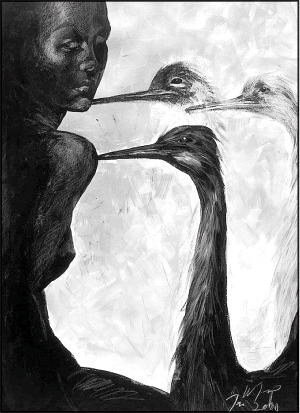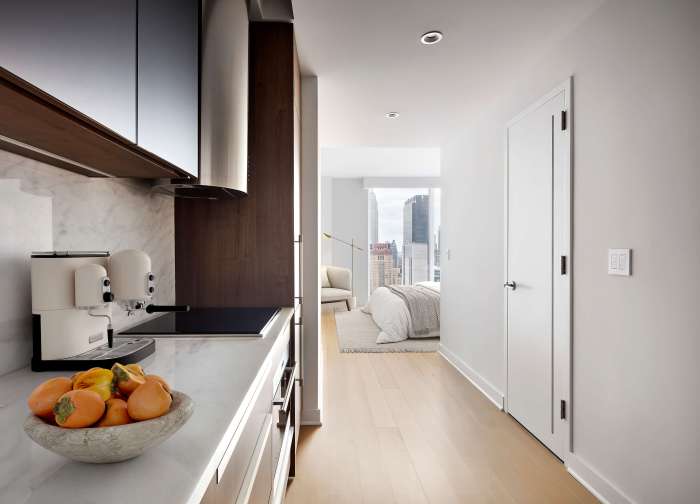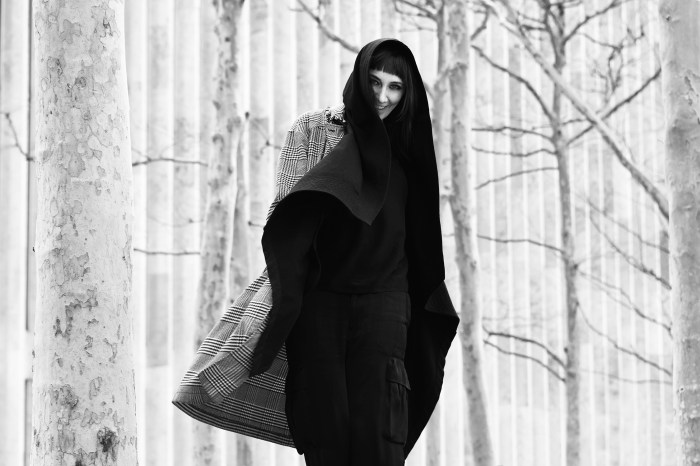BY STEPHANIE BUHMANN
February exhibits worth checking out
Last month, art galleries in all of the city’s neighborhoods re-opened their doors, cautiously tiptoeing into 2010. Of the shows recommended in last month’s column, especially Elisabeth Subrin at Sue Scott Gallery and Inka Essenhigh at 303 Gallery succeeded in attracting considerable crowds. Essenhigh surprised many of her longtime followers with a new mélange of landscape painting and 19th Century mysticism, while Subrin’s retrospective demonstrates how good conceptual video art can be a serious and poetic affair.
In January, the most shocking art-related news involved Downtown’s biggest gallery — Deitch Projects. Jeffrey Deitch, one of the city’s most influential art dealers (his artists consistently appear international museum exhibitions and biennials), announced that he would leave the gallery world to become the new director of the Los Angeles County Museum of Art. While according to Deitch, parts of his business might be transferred to some of his employees, it certainly means the end of Deitch Projects as we know it. It also means a considerable loss for SOHO. Deitch’s transition is unusual, as art dealers rarely abandon the gallery for the museum world. It might be a sign that times are somewhat changing, and it surely is a testament to what many galleries and museums have in common: a passion for discovering, growing, and maintaining artistic talent.
It is likely that many of this year’s gallery exhibitions will reveal a stronger focus on curatorial concepts, featuring less commercial fare. If sales are slow anyway, why not showcase more daring projects, such as large-scale installations? Some examples will be on view starting this month.
“Vaga Lume” is the title of Valeska Soares’ upcoming installation at Eleven Rivington (11 Rivington St., Feb. 28 – Apr. 11. Reception: Feb. 28; coincides with an installation Uptown at Greenberg Van Doren Gallery, 730 Fifth Ave. Feb. 18 – Mar. 21).
Hundreds of individual light bulbs will be anchored into the ceiling. Each can be turned on or off by a beaded chain that will extend vertically from the ceiling to the floor. These chains will fill the space as much as they will aid in veiling it. As is the case in many of Soares’ works, the audience becomes a crucial part of the overall dynamic of the work. Here, each visitor will be encouraged to enter the installation and manipulate the appearance of the piece by controlling the light. The experience will be sensual and somewhat dreamlike. It is Soares’ hope that immersing oneself in “Vaga Lume” (which means ‘firefly’) will be like standing “in the middle of a waterfall, looking at constellations in the sky.”
Katie Holten, who represented Ireland in the 2003 Venice Biennial, examines the meaning of place and her work manifests as an ongoing investigation of the relationship between man and nature. “The Golden Bough II” (LMAKprojects, 139 Eldridge St., Feb. 20 – Mar. 28. Reception: Feb. 20, 6 – 8 p.m.) is inspired by a recent study which determined the color of the universe — meaning the color one would see if one could view all the visible light in the universe together. Astronomers at the John Hopkins University in Baltimore claimed this color would be turquoise before revising it to beige. Holten, who usually works in black and white, will color the gallery in the stipulated hues — transforming the gallery space into her version of the universe. In addition, she will install sculptures, wall texts and drawings to help the audience navigate this minute galactic sphere. Following Holten’s acclaimed public art project at the Bronx Museum in 2009, this exhibition will be a great opportunity to experience this artist’s work on an intimate scale.
The debate about whether illustration can be considered fine art or whether it belongs to an inferior category is an old, exhausting one. However, today’s art world has become more lenient, noting that many painters of the past and present have been inspired by illustration.
Robert Crumb and Saul Steinberg are two well-known artists whose works are exhibited in prominent galleries and museums. In addition, illustrations that were originally created as commercial assignments by art stars like Andy Warhol or Ad Reinhardt, for example, have long been considered fine art. However, fashion illustrations — even those by the most prominent designers — are still lost in a kind of Twilight Zone. They are hardly shown in galleries or museums, at least outside the costume department.
A show that aims to overstep these traditional limitations is “Fashion Fantasy” — which features works by one of Germany’s best-known fashion designers — Wolfgang Joop (LUMAS New York, 77 Wooster St., Feb. 11 – Mar. 10. Reception: Feb. 10, 6 – 8 p.m.). The focus will be on works created between 2000 and 2007. While inspired by fashion, they promise to go beyond the simple sketch. Many of Joop’s pieces are inspired by nineteenth century aesthetics, emulating the expression and style of pre-Raphaelites such as Sir Edward Coley Burne-Jones and Dante Gabriel Rossetti.
Sears-Peyton Gallery will present “A Persistent Absence” — featuring Bo Joseph (210 11th Ave., Suite 802, Feb. 11 – Mar. 13. Reception: Feb. 11, 6 – 8 p.m.). The New York-based Joseph has just returned from a three-month stay in Berlin and the show will highlight paintings and large-scale drawings he developed overseas. Inspired by Berlin’s cyclical layering of destruction and reinvention, Joseph’s new body of work explores absences that still define the city’s identity. However, Joseph’s language is abstract and his references are far from literal. The symbols defining Joseph’s visuals include people, places and simple objects (such as paving stones that recently helped to patch up the scars left in Berlin’s streets after the removal of the Berlin Wall). He has scavenged imagery of objects that transcend cultural boundaries from various print media, and superimposed these to create dense webs of line and gestural fields of color. In Josephs’ work, roles are often reversed as objects can appear as voids and negative spaces as form. “A Persistent Absence” guarantees a sophisticated fusion of complex ideas with a unique painterly style.
Pace Wildenstein will host its first solo exhibition of Sterling Ruby, who only joined this prestigious gallery last year. (545 W. 22nd St., Feb. 5 – Mar. 20. Reception: Feb. 4, 6 – 8 p.m.). The installation — entitled “2TRAPS” — will include two large-scale sculptural works which Ruby created in his Los Angeles studio. “Bus” will feature a public transportation vehicle that has been transformed into a ready-made sculpture. Outfitted with a series of interior solitary confinement cages, speakers, sub-woofers, chrome fixtures, and exterior security doors, it promises to establish a thrillingly claustrophobic environment. The other work, “PIG PEN” will translate as a massive rectangular grid. It will be configured from a series of smaller custom-built rectangular blocks — each of which is comprised of four metal security doors that are identical to those found on urban homes.
Ruby explores the themes of liberation and repression, and his work often alludes to places of confinement — where life seems stagnant and isolated. A critical homage to all traps created by and for humans, “2TRAPS” will certainly be one of the more radical exhibitions staged by this usually more traditional powerhouse.


















